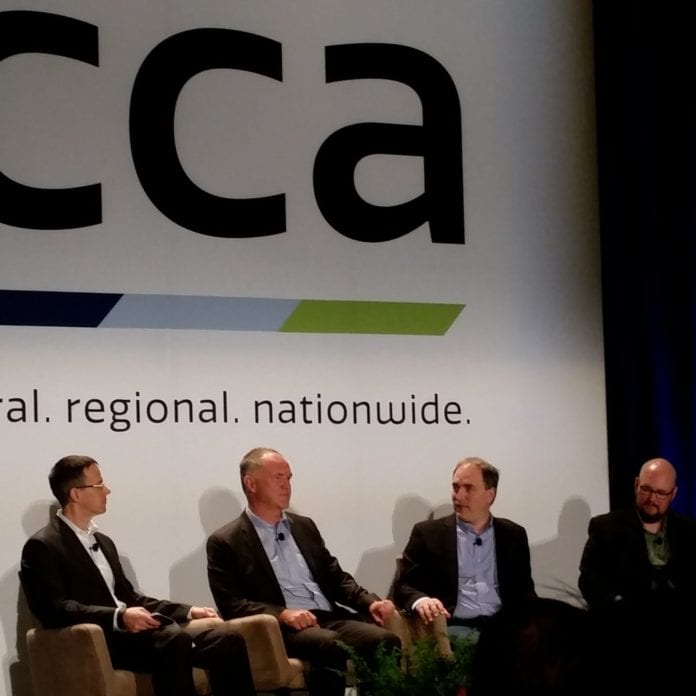CSpire, Nextech, Ericsson discuss network capacity issues and options
FORT WORTH, Tex.–Think only national carriers deal with network capacity crunches? Think again.
In a morning panel at the Competitive Carriers Association conference, tackling the increasing demand for wireless data was the topic of discussion, and rural and regional wireless service providers have most of the same challenges that the national carriers must deal with.
Nathan Sutter, director of network operations and engineering at rural carrier Nex-Tech Wireless, which serves about 60,000 wireless subscribers in Kansas and eastern Colorado, said that in the last two years, Nex-Tech has seen traffic levels go up 66%. That is plateauing somewhat, he added, noting that traffic was up 27% in the past 12 months alone. Sutter said that Nex-Tech isn’t at 100% capacity anywhere in its network and that it has deployed additional capacity at specific sites in order to manage the busiest times. But one of the challenges, he said, is that while it used to be that 5 p.m. was the “busy hour” for voice networks, as traffic has shifted toward primarily data, the busiest times are moving later and being extended. Now, Sutter said, peak usage starts in late evening around 7 p.m. and can last until midnight or two a.m., impacting the ability to perform network maintenance because capacity still needs to be available for customers actively using the network.
Craig Sparks, VP of technology for regional operator CSpire, said that providing a consistent customer experience is becoming both more important and more difficult, and that cell edge performance is already a challenge. He noted that operators have to put more focus on uplink performance, not just the downlink speeds, due to increases in user-generated content.
While “5G” promises to offer vastly increased speed and capacity, due mostly to the large amounts of spectrum available at millimeter wave frequencies, the panel at CCA was more focused on getting more out of Long Term Evolution and some of the technology upgrades, like multiple-input-multiple-output antennas and even massive MIMO, that are beginning to emerge as part of advanced LTE deployments and can represent a 50% to at least 5x increase in capacity depending on whether they’re deployed to support FDD or TDD LTE, and at low- or mid-band, according to panelist Paul Challoner, VP of network solutions for North America at Ericsson. Small cells are part of the solution, particularly in indoor venues, Sutter said, but outdoor small cells still represent a problem for Nex-Tech due to cost and backhaul availability. He also expressed skepticism about 5G as a true mobile technology, due to the proximity that would be needed for millimeter wave sites due to the propagation characteristics out of the spectrum.
Rather than count on 5G to solve network capacity issues, he said, “we’ve got to figure out how to get miles out of the LTE that we’ve deployed.”
Looking for more #cca2017 coverage? Follow me on Twitter: @khillrcr

